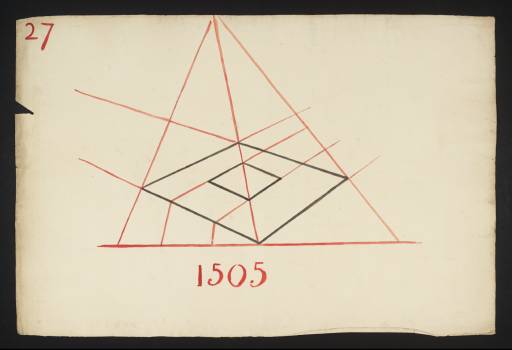One of the highlights of Lecture 2, given by Turner as Professor of Perspective at the Royal Academy, is his survey of historical techniques for drawing a cube in perspective. He begins with Diagram 27, demonstrating a method proposed by Jean Pélerin (?1435–40; died 1524), a French architect, sculptor and cleric who wrote under the name ‘Viator’. In
De Artificiali Perspectiva (1505) – the first treatise on perspective printed in Europe – Pélerin made the distance point method the basis of his system. Turner stated that it was ‘the earliest treatise I have met with’.
1 While researching his lecture, Turner copied one of Pélerin’s diagrams (1505, pl.1, centre diagram) into his
Perspective sketchbook three times, but, according to Maurice Davies, on each occasion he omitted the part that shows the square itself (Tate
D07396; Turner Bequest CVIII 27 recto, also
D07429; Turner Bequest CVIII 44).
2 In a preliminary version of the lecture, Turner provides a short description of Pélerin’s approach.
3 In another early version, of Lecture 3, Turner supplies a new description of the method which corresponds to what is illustrated in Diagram 27 but deviates significantly from Pélerin.
4 Because the manuscript used for lecturing does not include this new description and only refers to Pélerin in passing, Davies concludes that ‘it is unlikely that [Diagram 27] was included in the lecture that Turner delivered in 1811’.
5
